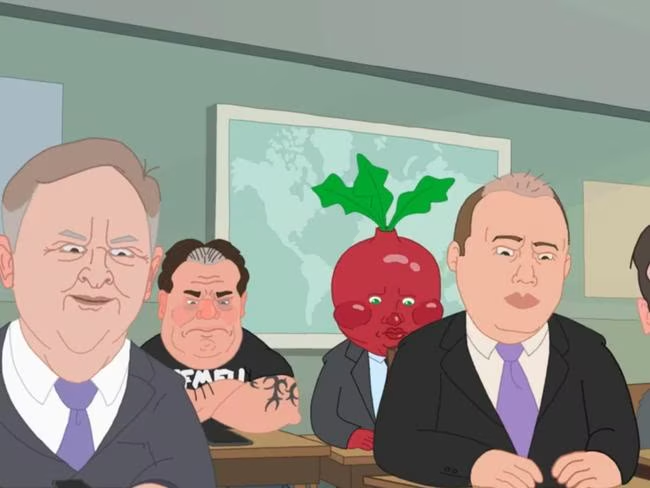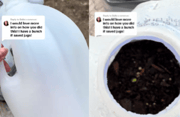
What began as a small-scale political experiment has grown into one of Australia’s most talked-about cultural flashpoints.
Pauline Hanson’s Please Explain animated series has divided audiences, sparked legal drama, and ignited fiery national debates.
Now, it’s making the leap from social media screens to the big screen—with a feature film debut set for Australia Day.
The timing is no accident.
In fact, it’s a calculated move that reflects the series’ unapologetic approach to poking the bear of Australian identity and politics.
From YouTube roots to Hollywood lights, this is the unlikely journey of a cartoon classroom that became a cultural juggernaut.
The series follows Hanson—voiced by herself—as a teacher lecturing a class of politicians, turning current events into lessons that double as political commentary for the One Nation party.
What started as a modest investment has snowballed into one of the party’s biggest publicity machines.
Some episodes have surpassed the views on Hanson’s previous most popular uploads, including her maiden speech, with one episode clocking more than 260,000 views.
The party’s YouTube channel experienced a 338 per cent surge in subscribers during campaign periods, reaching 50,000 followers.
Its animation style channels the irreverence of South Park, featuring caricatures like Barnaby Joyce with a beetroot head and Scott Morrison strolling in late wearing a Hawaiian shirt and lei.
But beneath the absurdist humour lies a finely tuned political strategy aimed at shaping public perception through laughter.
'It started small, as a lot of these things do, and now we have half a million people tuning into the show per week.'
The series’ rise has been far from smooth.
One episode drew formal complaints from the Australian Electoral Commission after falsely depicting Labor MPs plotting to boost their votes using fake postal ballots.
The platforms later removed the episode following the complaint, fuelling further debate about censorship and political misinformation online.
More recently, Hanson faced legal threats from Robert Irwin’s lawyers over an episode criticising Queensland’s Labor government, which also featured Irwin and cartoon favourite Bluey in unflattering portrayals.
Hanson refused to back down, declaring: 'I can confidently say we won't be taking the episode down... This episode highlighted the struggles many Queenslanders are facing due to serious failures of the Miles Labor state government.'
For many Australians over 60, this latest controversy has a familiar ring to it.
From Max Gillies’ political impersonations to The Chaser’s biting stunts, satire has long been part of the national political DNA.
Ironically, Hanson herself once fought against it, securing an injunction to block ABC from airing a satirical song by comedian Simon Hunt’s alter ego, ‘Pauline Pantsdown’, in the late 1990s.
Now, she finds herself at the centre of the very genre she once tried to silence.
Dr Stephen Mill from the University of Sydney warned that such portrayals might ‘further undermine the legitimacy and effectiveness of mainstream legislative politics’—a concern that resonates amid record-low trust in government.
Despite its high profile, Please Explain runs on a surprisingly lean budget.
Each episode costs roughly $11,000 to produce, funded through party resources and crowdfunding efforts.
Supporters have chipped in through donations and purchases from One Nation’s online store, including branded gin, rum, and vodka.
The series is produced by Melbourne’s Stepmates Studios, best known for the Seven Network cartoon Regular Old Bogan.
The partnership has proved mutually beneficial—Stepmates gained national attention, while One Nation gained sleek, professionally produced propaganda wrapped in humour.
Choosing Australia Day for the film’s release was no coincidence.
For Hanson, the date represents ‘the most important day of the year’, though it remains deeply painful for many First Nations communities who see it as the beginning of colonisation.
It’s a move that perfectly encapsulates the series’ ethos—using entertainment and controversy to amplify political messages that might otherwise go unheard.
Whether that’s clever marketing or calculated provocation depends entirely on where you stand politically.
While Hanson has expressed hope for a streaming giant to pick up the adaptation, none have publicly shown interest.
For now, distribution remains limited to One Nation’s YouTube channel and occasional segments on Sky News Australia.
A University of New South Wales report labelled the series ‘far-right’, a description Hanson rejected, underscoring the polarised debate surrounding its content.
Ultimately, the film’s success will hinge on whether viewers can separate humour from ideology—a distinction growing harder to maintain in today’s fractured media landscape.
Whether you see Please Explain as bold political innovation or manipulative propaganda, one thing is clear—it has changed how Australian politics is packaged and consumed.
Come Australia Day, the cartoon classroom steps into the cinema spotlight…and the nation will once again be forced to decide where it stands.
What This Means For You
What started as a small online project has evolved into a full-blown media phenomenon, with Please Explain now attracting hundreds of thousands of viewers each episode.
Along the way, it’s faced its share of controversy—from Electoral Commission complaints to legal threats from Robert Irwin’s lawyers—yet it continues to thrive.
Each episode reportedly costs around $11,000 to produce, funded through party resources and crowdfunding, showing just how invested supporters have become.
And with its Australia Day film release timed to stir debate, it’s clear Pauline Hanson’s team knows how to keep Australians talking.
Whether you find it entertaining or infuriating, there’s no denying that Please Explain taps into the same mix of humour, politics, and national pride that’s long defined the Aussie spirit.
While political satire like Please Explain shines a light on how humour shapes public opinion, real-world policy changes can have an even greater impact on daily life.
As leaders debate culture and identity on screen, others are making decisions that affect health, care, and financial wellbeing off it.
If you’re curious about how recent government changes could influence these areas, the next story offers a closer look.
Read more: New Minister for Ageing: What It Means for Older Australians’ Health, Care and Finances
Pauline Hanson's Please Explain — Wikipedia summary of the animated political satire series, including premise, settings, production, and controversies.
"Sowing doubt, without proof": One Nation animations exploit boundary between satire and disinformation — RMIT University report analysing how Pauline Hanson’s animated series blurs satire and misinformation boundaries, including viewership data and AEC complaints.

"Sowing doubt, without proof": One Nation animations exploit boundary between satire and disinformation
Pauline Hanson's Cartoon Isn't A Silly Little Political Comedy When It Comes From Her — Pedestrian TV commentary on the satirical portrayal of Australian politicians and the cultural implications of Hanson’s cartoon.
Pauline Hanson Refuses To Take Robert Irwin Cartoon Down After His Legal Threat: 'Lighten Up' — Pedestrian TV article detailing Hanson’s response to legal threats from Robert Irwin’s lawyers over a controversial episode.

Pauline Hanson Refuses To Take Robert Irwin Cartoon Down After His Legal Threat: 'Lighten Up'
Please Explain! Pauline Hanson Chases The Youth Vote In Bizarre Southpark-Styled Animation Series — B&T report highlighting the political strategy and academic critiques surrounding Hanson’s animated campaign.

Please Explain! Pauline Hanson Chases The Youth Vote In Bizarre Southpark-Styled Animation Series
Do you think satire like Please Explain helps political discussion—or just makes it harder to take politics seriously?







